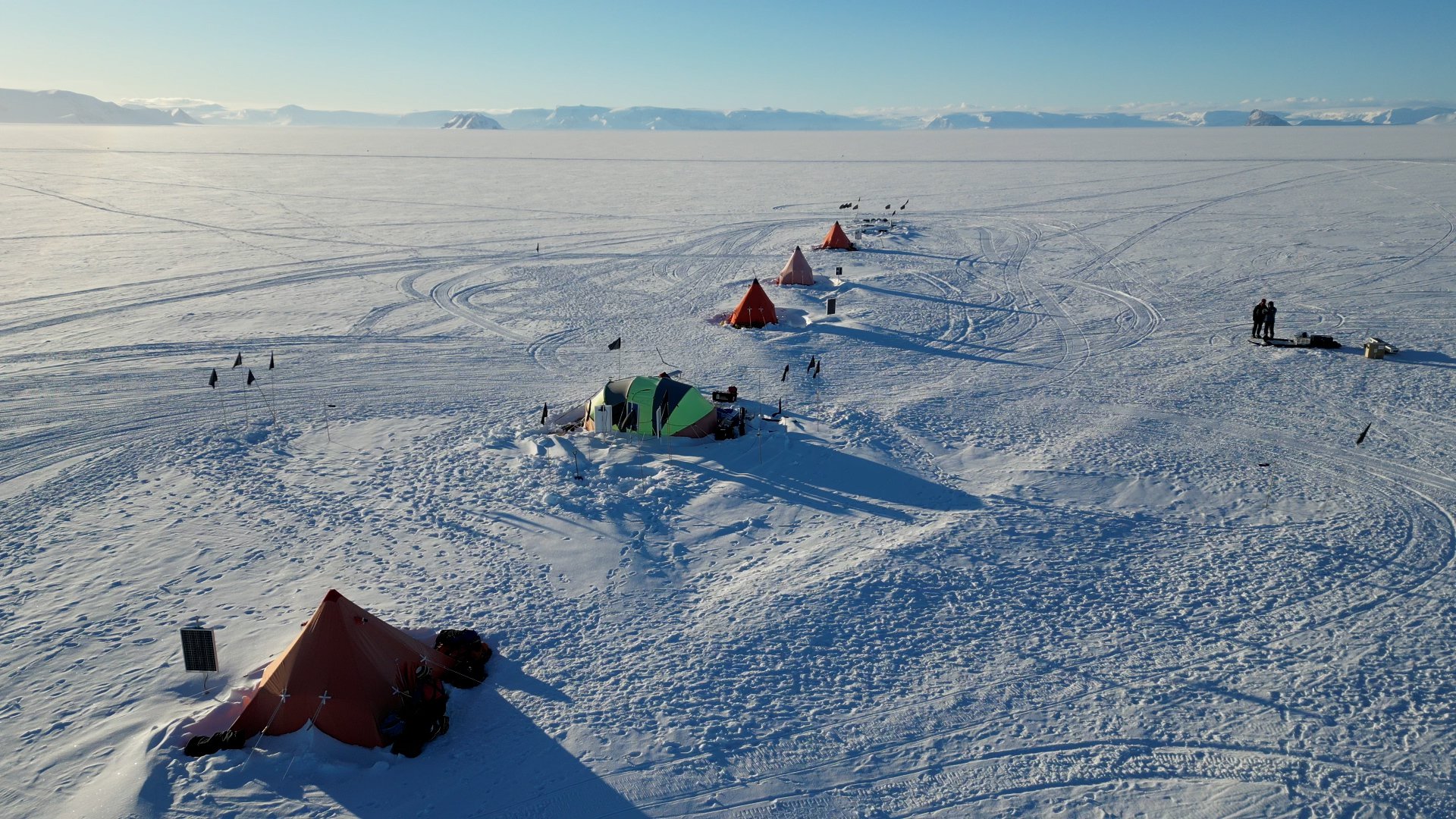
How is research in Antarctica improving future sea-level predictions?
Cold Environments Curiosity Booster

Developed in partnership with




Course links: GCSE • IGCSE • A-level • IA-level • IB • National 5 • Leaving Cert • Higher Geography
Description
If global surface temperatures rise by 5.7 degrees Celsius (IPCC SSP5-8.5 Fossil-Fueled Development scenario), Antarctica could contribute between 3 and 34 centimetres to global sea-level by the year 2100. In fact, some studies suggest that the rise may be more than 1 metre! This is huge uncertainty in predictions for just one of many possible climate scenarios. This reason for this uncertainty is that there is so much that we still don't know about Antarctica's complex systems.
So what are some of the biggest questions at the cutting edge research into Antarctica and sea level rise? And how are geographers working to address them?
To investigate this, we team up with Prof Adrian Luckman, Dr Katie Miles and Dr David Small; three geographers leading major research projects in Antarctica today, to improve our predictions of future sea-level rise. We explore how a new understanding of ice shelves is helping determine the future of these important, protective buffers, and how cosmic rays can help us test the accuracy of computer model simulations.
Considering taking geography and geoscience further at university? Use this video to see how the geography you are learning in school is connected to addressing major global challenges!
Acknowledgements
Written and developed by: Adrian Luckman, Katie Miles, David Small, Rob Parker, Harriet Ridley, Tim Parker, Emily Bilbie, Addy Pope, Katie Hall, David Morgan
This video was supported with funding from NERC grants NE/T011963/1 and NE/T008016/1.
Thank you to Dr Adrian Luckman for making ice flow time lapse clips of Thwaites Glacier and Pine Island Glacier available for use in this video. These visualisations contain modified Copernicus Sentinel-1 data (2016-2020), processed by ESA.
Attributions
A DRENCHING SLICE OF St IVES FROM STORM IMOGEN by Cornishpastyman is licensed under CC BY 3.0.
NASA: Laser Focus by NASA is in the public domain.
Antarctic Bedrock by NASA is in the public domain.
Unusual Winds Drive a Small 2019 Ozone Hole by NASA is in the public domain.
Antarctic Ocean Flows: an excerpt from Atlas of a Changing Earth by NASA is in the public domain.
Larsen C square iceberg commentary by NASA ICE is licenced under CC BY 2.0
Crack in Larsen C Ice Shelf by NASA is in the public domain.
ScienceCasts: The Mystery of High-Energy Cosmic Rays by NASA is in the public domain.
Spalte Glacier by NASA is in the public domain.
Slowdown_Short_Up by anomalous_underdog is licenced under CC BY 4.0
Breaking_Ice_01 by dheming is licenced under CC BY 4.0
Coast Ambience 4, beach, close loud waves, rumble, white noise by GeorgeHopkins is licenced under CC BY 4.0
Clips from Flying over the North Rift on Brunt Ice Shelf, Antarctica and Larsen C Ice Shelf by the British Antarctic Survey are reproduced in accordance with exceptions to copyright under UK law in Copyright, Designs and Patents Act 1988 (as amended). In keeping with this, the material is reproduced for the dissemination of non-commercial research ideas, criticism, review, reporting of current events and teaching purposes, and in a manner consistent with fair dealing. If you believe your content has been used improperly, please do not hesitate to contact [email protected].


